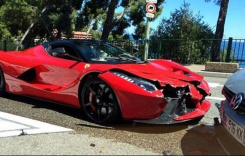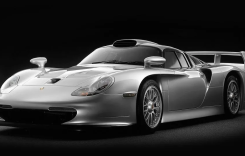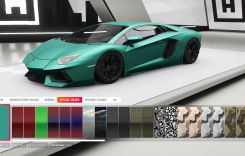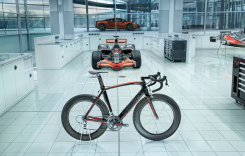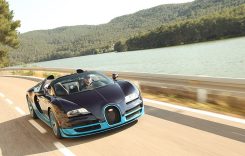Ever since Triumph introduced an up-spec R version of its middleweight Street Triple, there hasn’t been much on the road that can match its fun factor. And there’s no question the Triumph Street Triple R gets top marks, hands down, for the sheer power and performance of its Inline Triple.
“This bike has aggressive throttle response and yes, it hauls ass,” promises Tania. “The engine doesn’t miss a beat low or mid-range and through the top-end RPMs this bike continues to pull.”
The Triumph has gobs of torque and travels well at higher speeds. The Street Triple earned top honors in a long list of performance categories including: horsepower, zero to 60 and quarter-mile acceleration. On the dyno, the Supersport nature of the 675 powerplant exerts itself, screaming up to 95 ponies. That’s more than 20 more than its nearest competitor, the BMW.

Boasting 95 horsepower, the 2012 Triumph Street Triple R features a potent engine with an aggressive throttle response that might not play well with beginners.
The raw power production from the Triumph makes for an entertaining ride, but it isn’t for novice riders, as Sarah explains: “This bike is very fast, quick and the power comes on a bit ‘light-switchy.’ I wouldn’t recommend this bike for a beginner, because you really have to finesse the throttle in tighter turns.”
What does the Street Triple sound like? I think it just wants to get up and go. It feels well-sorted, sounds like it is packing some pure horsepower, yet delivers very little vibration in return.
The drivetrain on the Triumph earned second-place honors. It is easy to shift, smooth throughout and the gearing felt perfect for highway cruising and navigating the Palomar Mountain curves. The engine feels precise. I couldn’t stop thinking about how this Triumph and the other one I recently tested reminds me of a Swiss Army Knife motorcycle. When I was riding, I envisioned the designers more like surgeons than engineers.
One of our test riders had trouble with the clutch because it didn’t engage until her hand was almost all the way open. She said it was fine while riding, but at stops and during low speed maneuvers, she was worried about lurching or stalling. The clutch lever wasn’t adjustable.
The suspension on our Triumph test bike was stiff, which made it pleasant for the more experienced riders who could appreciate that setup on the curves. On the highway, it didn’t seem too uncomfortable.
This bike is designed to tackle the types of roads (and trackdays) so many of us live for. That’s why it comes stock with top grade and fully adjustable suspension front and rear, not to mention a lap timer. It’s not just there for looks. Our testers felt confident as soon as they climbed aboard.
While the bug eye lamps divided test rider opinions, there’s no denying the high-performance pedigree of the Triumph.
This bike is more expensive than all the others, short the BMW with ABS, but you get what you pay for when it comes to suspension. Inverted Kayaba 41mm forks with 120mm travel in front and Kayaba in the rear – a monoshock with piggy back reservoir adjustable for rebound and compression damping and 130mm travel. That just screams “take me to a track day woman!”
“I think Triumph got the suspension just right,” says Vicki. “It was a dream to ride on the freeway and in the tight stuff.”
Sarah agrees, saying: “The suspension was excellent and the whole bike just felt tight. Once you have the throttle-finessing down, the Triumph felt like it was dropping into turns on its own.”
Okay, so the Triumph can go, but can it stop just as well?
The Triumph earned top scores in the objective stopping distance test, going from 60-0 five feet earlier than the second-best bikes. The supersport spec twin-piston radial brakes also received positive feedback from our group. One rider did notice some front-end chatter when she was braking hard in a straight line. Another rider appreciated the adjustable front brake lever. I never felt chatter or anything less than a predictable and dependable braking system.
Vicki, our resident retired road racer says: “All of the indicators and levers were easy to reach and in a comfortable position, and they felt smooth and refined, like they had been designed with attention to detail. At 5’9” I felt completely comfortable. I liked the slightly more upright handlebar positioning for the highway riding. The mirrors were well positioned and easy to use.”
While the Triumph may sit a tad bit higher at 31.7 inches than the Ducati at 30.3 inches, it has more of an upright riding position. Sarah liked the aggressive seating position, but felt like the Triumph was more of a tall-person’s bike when you consider the seat height. I am at least two inches shorter than Sarah and the seat height never came up for me. It is possible I was just too absorbed with the whole “powerful” experience.
The Triumph earned top honors in many categories such as horsepower, zero to 60 and quarter-mile acceleration.
Earning double 10’s for rider interface and overall comfort, the dash is loaded with features including trip odometer, an easy-to-read analog tachometer and a large digital speedo. Vicki commented that she appreciated being able to easily see the time of day as well as the engine temperature readout. We were all surprised that the Triumph does not have a gas gauge. Shouldn’t all street legal motorcycles come equipped with this handy and convenient feature?
The lines on this bike are sleek and look great in black with gold trim, though not everyone was on board with the Trumpet’s styling. “It’s a real head turner,” states Vicki. “The headlights looked a little out of place to me, like they were sticking too far out. But I think once you add the mini instrument fairing that sits above the lights, the bike takes on a more balanced look.”
“A few of us called the bike E.T. because of the headlights,” claims Sarah. “They are buggy and throw off what is otherwise a really cool naked bike. It’s just not balanced, but it is unique. You can spot this bike from a distance coming at you. That’s for sure.”
Add up the points and the Street Triple R earns top honors in our Street Bike Shootout, in large part to the performance testing results. The Triple delivers exhilarating power in a playful package and with a price tag that seems every bit worth it. While maybe not ideal for the entry-level rider, this is a bike that novice riders may use to grow their street and track skills while never tiring of the experience.

